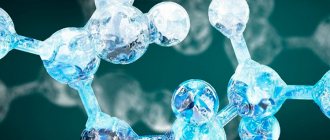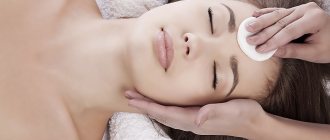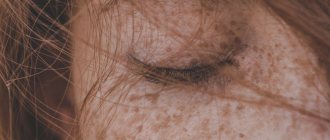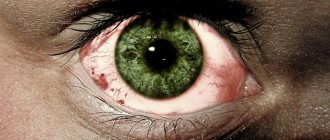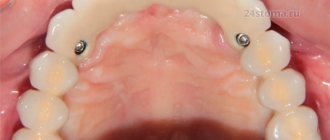Dry and cracked heels are a common skin defect. Occurs more often during hot periods, less often in winter. Diseases are also causes. Cracks not only worsen the appearance, but also provoke unpleasant pain. Creams will help to cope with this problem; they perfectly nourish, moisturize the skin and promote its regeneration.
When to use
It is necessary to use cosmetics and medications against dry and cracked heels if the following symptoms are observed:
- Severe dry skin. With this type of dermis, the heels are more susceptible to the development of corns, cracks and infection.
- Thickening of the epidermis. Hyperkeratosis is most often accompanied by skin wounds.
- Pain in the feet when walking.
- Burning and severe itching.
- Unpleasant smell.
- Bleeding.
If you have one or more of the above signs, you should use anti-crack cream.
Why does eczema become chronic?
Chronic eczema develops if the acute stage of the disease is not treated for a long time. Another reason is the constant influence of allergens on a person. Because of this, the acute form cannot be treated and becomes chronic. This is caused by allergens that enter the body through the respiratory system, digestive system, as well as contact allergens that negatively affect the skin. Chronic inflammation is also supported by:
- long contact with water, especially hot;
- chronic bacterial, fungal infections;
- constant stress, emotional stress and lack of sleep;
- exposure of the skin to hot, dry or cold air.
These are the main causes of chronic eczema. In addition, a relapsing course is characteristic of a number of specific forms of the disease:
- Dyshidrotic eczema. The disease is characterized by seasonal exacerbation, i.e., an increase in symptoms with the change of two contrasting seasons - hot summer and cold winter.
- Nummular eczema. It can be recognized by rashes that resemble coins in shape. Without treatment, the disease lasts for weeks and months, worsening over time. And even after treatment, the disease can easily return, that is, the patient again experiences exacerbations.
- Varicose eczema. Occurs with chronic insufficiency of the veins of the legs, in which blood circulation slows down. Eczema occurs in 2.7-10% of patients with this diagnosis. The disease has a chronic, relapsing course and a tendency to progress.
- Seborrheic eczema. Another chronic form, caused by improper functioning of the sebaceous glands. Because of this, pink itchy spots appear on the scalp, forehead and wings of the nose.
What must be present in the cream
Important components of care products for eliminating severe dryness and cracked heels are:
- Essential oils of shea, jojoba, coconut and lavender. Nourish and moisturize the skin.
- Salicylic acid and urea. Prevents the development of corns, calluses and cracks.
- Propolis. Forms a protective film, preventing moisture loss and exposure to adverse environmental factors.
- Aloe, keratin, calendula extract. Accelerate the regeneration of the epidermis.
- Betaine. Moisturizes and softens the skin, eliminating hyperemia and other signs of irritation.
- Vitamin complexes.
- Panthenol. Deeply nourishes all layers of the dermis, increases the degree of its regeneration.
- Glycerin. Restores water balance, heals cuts, cracks and effectively moisturizes the skin.
Skin xerosis. Solving the problem externally
Xerosis is caused by impaired sebum and sweating, a deficiency of amino acids contained in the stratum corneum of the skin, and dehydration. Most often, xerosis appears on the skin of the feet due to an initially small number of sebaceous glands, slow turnover of epithelial cells and a pronounced violation of the protective functions of the skin.
The main cause of dryness is a lack of moisture in the stratum corneum of the skin; with a long-term process, peeling, a feeling of tightness, irritation, microcracks and itching appear.
Dryness occurs due to insufficient care, poor circulation, which is facilitated by constitutional features, wearing tight clothes and tights, tight shoes, insufficient moisture intake, and also due to alkalization of the skin with hygiene products and the use of harsh abrasive products. The problem with dryness most often manifests itself in the autumn-winter period due to the fact that with the onset of cold weather, the feet are constantly in contact with warmer and coarser woolen fabrics and synthetics, and this prevents sufficient air penetration; In addition, seasonal vitamin deficiency affects it. At the same time, problems can also arise in the summer, which is associated with prolonged exposure to the sun and walking barefoot. With proper and regular care, an aesthetically pleasing appearance is achieved. The main causes of skin xerosis and options for their correction are presented in Table 1.
The main pathogenetic mechanisms of increased skin dryness are:
1) a decrease in barrier function due to the failure of the lipids of the stratum corneum, a violation of their structure and location, which causes defects in the intercellular lipid layers, which leads to an increase in transepidermal moisture loss;
2) a decrease in the ability to retain moisture due to a lack of hygroscopic substances inside corneocytes, the so-called natural moisturizing factor (NMF), which consists of free amino acids and their derivatives, lactic acid, urea and other components that create the hydrolipid mantle of the skin [5];
3) disruption of moisture transport from the dermis to the epidermis and stratum corneum.
All this leads to dehydration of the epidermis and the development of a clinical picture of xerosis [1–3].
The group of chronic dermatoses, accompanied by dryness, hyperkeratosis and peeling, includes a large number of skin diseases. These include such common diseases as psoriasis, eczema, atopic dermatitis with lichenification, squamous-hyperkeratotic forms of mycoses, and rare nosological forms - ichthyosis, keratoderma, etc. Xerosis is also characteristic of age-related changes or can be caused by concomitant somatic pathologies - diseases thyroid gland, diabetes mellitus (DM), vitamin deficiency, metabolic disorders.
The process of development of dehydration at the cellular level is presented in Figure 1, and the stages of clinical manifestations during the development of skin xerosis with possible correction methods are shown in Figure 2. It should be noted that these phases can be traced for all manifestations of dry skin, both in chronic dermatoses and for somatic diseases.
Xerosis of the skin of the feet in diabetes is one of the provoking factors of diabetic foot syndrome. Statistics show that the appearance of diabetic foot signs is associated with the stage of decompensation in individuals suffering from type 2 diabetes; manifests itself in 90% of patients [4]. This condition occurs due to angio- and neuropathy of the feet, i.e. destruction of nerves and blood vessels, while tissue nutrition deteriorates, their protective function decreases, and this leads to trophic changes and thereby increases the risk of developing gangrene or ulcers even with minimal injuries. Such patients complain of discomfort in the legs, stabbing and burning pain when the legs are at rest, at night, as well as severe pain when walking. Over time, the sensitivity of the feet noticeably decreases, the color of the skin of the lower extremities changes - it becomes pale or with a slight brownish pigmentation, at the same time dryness, peeling of the skin, cracks, microvesicles with serous contents, as well as thickening of the stratum corneum of the skin of the feet appear. All this shows that xerosis of the skin in diabetes, both due to general dehydration and autonomic diabetic neuropathy with impaired innervation and regulation of the sweat glands, is not only a cosmetic problem, but also one of the links in the development of diabetic foot syndrome.
Dry skin to one degree or another occurs in 85% of patients at the appointment. Therefore, practicing doctors encounter such patients every day, sometimes they make up the majority of adult dermatological appointments. Advances in pharmacology, in particular combined anti-inflammatory drugs with exfoliating components, have significantly improved the quality of life of patients, and their availability and variety in pharmacy chains make it possible to make choices and experiment with treatment methods. Over time, new issues have arisen in the treatment of dermatoses accompanied by hyperkeratoses, namely, the duration of use of combined and monosteroids, anti-relapse and preventive therapy, care for hyperkeratotic conditions and peeling, the correction of which is initially difficult due to genetic “breakage” or due to concomitant diseases.
Currently, there is a reassessment of the importance of cosmeceuticals in the therapy and care of the skin of patients with xerosis, chronic dermatoses, and diabetes. There are a number of modern lines of medical cosmetics for skin care for hyperkeratosis, which have proven themselves, are widely available for everyday use and often have a pronounced softening, exfoliating and moisturizing effect. Basic drugs, most often based on topical steroids, have high expectations in terms of their antiproliferative, resolving, antipruritic, anti-inflammatory, antibacterial and healing effects. But such properties, while maintaining a softening, moisturizing and exfoliating effect, are also inherent in classic dermatropic components with metabolic, hydrating and softening effects: urea, various acids, panthenol, complexes of oils, alkaloids and flavonoids.
To successfully combat dry feet, you first need to find out the cause of its occurrence. Diagnosis of dry skin involves excluding fungal infections, various endocrinopathies, skin diseases, and identifying the causes of xerosis. If the cause is any disease, then it is necessary to first cure it or correct the condition, and then deal with the manifestations. In some cases, with a severe inflammatory reaction, the prescription of glucocorticosteroid or combination creams with the parallel use of care products is required. But sometimes the use of moisturizers, which have pronounced effectiveness in treating dryness of various origins, high organoleptic properties, a high safety profile and good tolerability, leads to the desired result. At the same time, it has been clinically proven that anti-inflammatory drugs in combination with emollients are more effective than monotherapy with glucocorticosteroids. Thus, one of the main tasks when the skin barrier function is impaired is protection and hydration. Examples of products that effectively solve these problems are foot balms Balzamed and Balzamed intensive (Esparma GmbH, Germany), which are recommended for daily care of dry and sensitive skin of the feet, prone to redness, irritation, the formation of chafing and calluses, especially in patients with diabetes. .
Balzamed balms provide the skin of the feet with sufficient hydration and nutrition, preventing the formation of chafing and calluses, the appearance of peeling, redness and irritation on the skin of the feet. Balzamed balms contain a balanced composition of vital vitamins, moisturizing components and softening vegetable oils.
Balzamed and Balzamed intensive balms contain the following components:
Vitamin A, which protects against excessive keratinization and increases the skin's resistance to infections, protects it from the formation of microcracks, slows down the aging process, improves its elasticity and general condition.
Vitamin E (tocopherol acetate) is an antioxidant, binds free radicals, protects skin cells from metabolic damage caused by metabolic disorders, as well as from external environmental influences, helps reduce skin itching.
Vitamin F increases skin elasticity, regulates moisture content, and promotes rapid healing of microcracks.
Provitamin B5 (panthenol) accelerates the healing of small wounds, maintains water balance and skin resistance to external environmental influences, stimulates the regeneration of skin and mucous membranes, normalizes cellular metabolism, accelerates mitosis and increases the strength of collagen fibers, has a regenerating and anti-inflammatory effect.
Lactic acid promotes exfoliation and hydration, faster cell renewal.
Urea increases the absorption of water by keratinized areas of the skin, actively moisturizes dry skin and increases its permeability to vitamins, and also protects against external environmental influences; easily penetrates into the deep layers of the epidermis and serves as a conductor for other active components; has keratolytic, wound healing and bacteriostatic effects.
Avocado and jojoba oils contain vitamins A, B, D, E and K, soften, moisturize and nourish the skin, have a protective effect, restore skin elasticity, and prevent premature aging.
Zinc stearate, which is part of Balzamed intensive, stabilizes the skin of the feet and promotes healing.
Thus, the components included in the balms Balzamed and Balzamed intensive have a pronounced anti-inflammatory, antipruritic, exfoliating and antimicrobial effect, help restore damaged skin, increase the regenerative and barrier functions of the skin, prevent the feeling of dryness and irritation, relieve itching, promote hydration and restoration of affected areas of the epidermis. These drugs can be used both in complex therapy with anti-inflammatory glucocorticosteroid drugs, and independently, as a means of daily skin care.
In order to achieve maximum positive results, it is recommended to apply the foot balm daily to the damp skin of the feet, especially to areas subject to pressure and friction, rubbing in with light massaging movements.
Regular care of the skin of the feet using Balzamed will prevent the appearance of peeling, redness and irritation on the feet, the formation of corns and calluses, give elasticity and firmness to the skin, and prevent premature aging.
Skin xerosis is, as a rule, cyclical in nature with periods of deterioration, especially in the autumn-winter period, and therefore foot balms Balzamed and Balzamed intensive are the main links in both therapeutic and preventive care for the skin of the feet and allow you to completely cope with the problem of dry skin , including with such serious concomitant diseases as diabetes.
How to choose the right cream
When purchasing a medicinal or cosmetic product to combat wounds and dry skin on the heels, you must take into account some criteria:
- Therapeutic property. Preference should be given to creams that have regenerative, softening, protective and nourishing effects.
- Hypoallergenic and natural composition. It is advisable to buy products based on natural ingredients.
- Expiration date.
- Method of application. You should read the attached instructions for the product. The application of certain types of creams requires some processing of the skin for the best therapeutic effect.
Features of the course of chronic eczema and differences from acute
We can talk about the process being chronic if the symptoms that first appeared did not go away within 2 months. Chronic eczema, unlike acute eczema, occurs in 2 stages, such as exacerbation and remission, which replace each other. Relapses usually occur in the cold season, but improvement can be noticed in the warm season. In addition to low temperature, exacerbation can be triggered by:
- increased sweating;
- contact with allergens, such as pollen;
- stress and anxiety;
- weakened immunity;
- taking certain medications;
- consumption of allergenic foods.
In the chronic stage of eczema, there is always a rash and itching. Moreover, itching usually precedes the appearance of rashes and can be used to determine that an exacerbation will soon occur. With chronic eczema, there are more dry crusts on the skin than weeping rashes, which is why this form of the disease is sometimes called dry. The crusts crack and itch very much, causing discomfort and even insomnia.
With exacerbation, the signs of chronic eczema intensify. New weeping rashes appear next to the dry crusts, but less exudate comes out of them than in the acute form. Other characteristic symptoms include:
- severe peeling of the skin;
- violation of skin pigmentation, development of pigment spots;
- pronounced linear pattern on the skin;
- excessive compaction and hardening of the rash;
- scratches and cracks in areas of thickening.
Chronic eczema in remission is manifested by constant peeling of the lesions. The skin in these places scars, so it becomes dense, and can acquire a blue-red tint in dark-skinned people and pale pink or beige in light-skinned people.
The most effective remedies against dry and cracked heels
Among cosmetic and medicinal products, there is a huge selection of products to combat increased heel dryness and cracking. The best are:
- Vaseline.
- Ciel Parfum.
- Gehwol Med.
- Dexeryl.
- TianDe.
- Calendula ointment.
These products have a unique composition and effectively treat cracked heels, softening and moisturizing the skin of the feet.
Causes and consequences of dry feet
Dry feet are not only a discomfort, but also a cause of cracks.
To avoid having to treat skin breaks later, make sure that the following factors do not affect your legs:
- Open shoes . When the foot is not protected from external influences, it takes on dust and the rays of the sun;
- Standing work . Your feet get the most stress when you have to stand all day. As a result of standing for a long time, blood circulation is impaired, which results in a problem in the form of dryness;
- Wrong shoes . Shoes should be selected to fit, and also made from natural materials so that the feet can “breathe”;
- Clinical conditions . Sometimes dry feet are caused by medical conditions. Diabetes mellitus, deficiency or excess of vitamins, anemia - these diseases provoke increased dryness;
- Love for water procedures . Long water procedures - taking a shower or bath - often cause dryness, although immediately after the bath the skin seems soft and nourished.
Consequences of constant dry feet:
- First of all, it does not look aesthetically pleasing . Peeling heels cause discomfort in their owner and a desire to hide her feet from prying eyes;
- Cracks . One of the consequences of dry heels is the formation of cracks, which appear only on the skin that has lost moisture and elasticity.
Dexeryl
An excellent remedy for treating dermatological problems. Made in France. Sold in small tubes, cost about 600 rubles.
The basis of the cream is glyceryl and other useful components. Due to this, deep nutrition and hydration of the heels and regeneration of skin cells are observed.
Apply the cream 1-2 times a day, thoroughly rubbing into the damaged area. The duration of the course is determined until the wounds are completely healed.
There are almost no contraindications to the use of the product. The only thing is that the cream is not used for individual intolerance to substances.
A comprehensive approach to hydration
In order to forget about rough feet and heels, you need to know the important steps to care for them. Try to adhere to these points and dryness will no longer cause discomfort.
- Foot baths .
Baths are a great way to steam the skin, relieve tension and speed up blood circulation. To maintain the effect, it is enough to carry out the procedure 1-2 times a week for 20 minutes. But do not use too hot water - 35-40 degrees is the most optimal temperature for a bath; Masks and baths against dry feet and heels - Exfoliation .
Immediately after the bath, also 1-2 times a week, exfoliate dead cells. Removing keratinization will help creams work to saturate the healthy epidermis, and not to soak the already dead one. To exfoliate, use your usual method - mechanical, for example with a pumice stone or scrub, or chemical - with the help of peelings and keratolytics. In the latter case, be sure to study the instructions - some drugs cannot be used more than once a month due to the aggressiveness of the composition; All types of foot scrubs, how to use, review of products and recipes - Moisturizing and nutrition .
Lubricate your feet with cream daily, or better yet, 2 times a day - morning and evening. Use proven effective means. Types of foot care creams
Our selection will tell you what products to pay attention to.
Treatment of atopic dermatitis in children
In this article, we will pay great attention to the treatment of this disease, and will also talk about the main features of the use of medications in children with atopic dermatitis.
The basis of treatment is external therapy using various medications. The goal of external (local) therapy is the complete elimination of inflammatory changes, itching, as well as restoration of the water-lipid layer of the skin. Local glucocorticosteroids (hormones), calcineurin inhibitors, and emollients are used as such agents. We will pay special attention to emollients. Emollients are medicinal cosmetics that care for the skin and prevent dry skin. In some cases, systemic therapy is also prescribed. Systemic therapy refers to the use of drugs that are administered orally. Antihistamines are most often used as systemic therapy.
Below we consider the most common drugs for the treatment of blood pressure in children.
The goal of local therapy for atopic dermatitis is the complete elimination of inflammatory changes and itching.
Hormones
Local glucocorticosteroids (MGS) are used as hormones. They are the most powerful drugs at the onset of the disease, which allows the symptoms of this disease to be eliminated in the shortest possible time. The duration of use of these drugs should not exceed two weeks. If possible, use of MGCs should be short.
What parents should remember when using these products:
- It is not recommended to mix MHA with other agents.
- When the symptoms of the disease decrease, it is necessary to reduce the amount and frequency of MHA use.
- In the event of a bacterial or fungal infection, it is necessary to use a combination of MHA with antibacterial and antifungal drugs.
- Do not apply these medications under closed dressings.
- With long-term use, complications may develop. Such complications include: stretch marks, telangiectasia, skin atrophy. Striae are white to pink stripes on the skin. Telangiectasia is popularly called “spider veins”. This complication is a vascular formation with dilated vessels. Atrophy is characterized by a skin defect with a change in its volume and elastic properties.
Local hormones exist in different classes, depending on the strength of their action. The most common MGCs are: celestoderm, elokom, lokoid, dermovate, cutivate.
Calcineurin inhibitors (CI)
A special feature of these drugs is the absence of complications inherent to hormones. They can be used together with hormones. After eliminating symptoms, MGC can be replaced with IR, which will avoid the development of complications. The two most common medications in this group are pimecrolimus and tacrolimus. Pimecrolimus is used for mild cases, while tacrolimus is used for severe cases.
